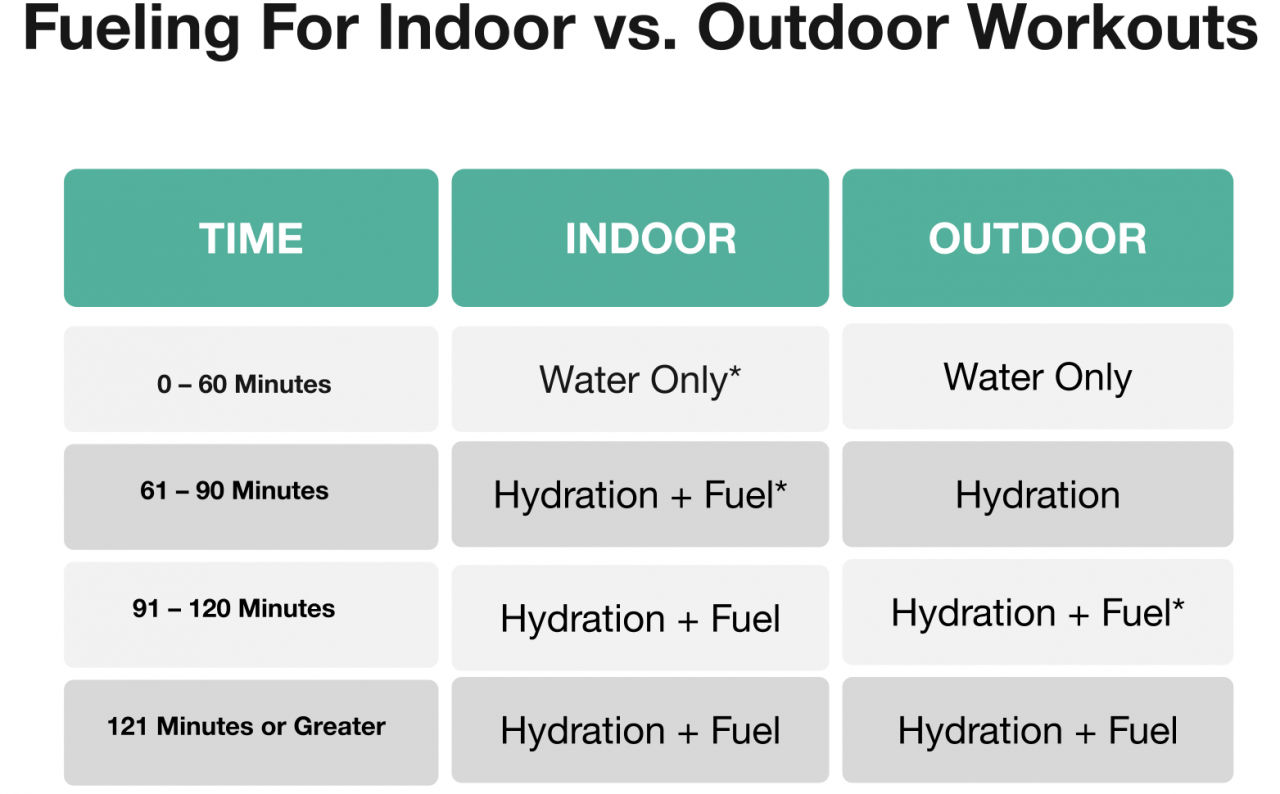Notes:
The above guidelines are based in generality. Ultimately your fueling strategy depends on:
- Pre workout fuel levels
- Intensity of workout
- Temperature
- Weekly training load
The term hydration refers to a hydration specific product that has minimal sugar and optimal ratios of electrolytes like NBS Hydration.
Typically, our indoor workouts are more structured with specific intensity intervals throughout. Combine that with less rest time vs. outside (stop lights, stop signs, down hills, etc) and our energy expenditure is greater per minute of training. For this reason, our fueling plan for indoor workouts should vary slightly from our outdoor workout fueling plan.
0 - 60 Minutes
For these workouts, regardless of intensity, plain water is sufficient. For intense, indoor workouts, especially if they are done on a multi-workout day, or during a heavy training block, a hydration specific product or even some calories may be necessary.
61 - 90 Minutes
Workouts in this range can be a bit of an anomaly. Your fueling strategy can run from plain water for easy workouts to hydration and fuel for tough workouts. Let workout intensity and overall training load be your guide. When in doubt, go with hydration as your baseline and add in 100 - 150 calories over the course of the workout as needed.
91 - 120 Minutes
These workouts are on the cusp where intra fueling is a necessity. Typically fuel will be needed for indoor workouts since they are more demanding than outdoor workouts of the same duration. For outdoor workouts, you will need calories for the more intense efforts but might only need hydration for easy efforts.
121 Minutes or Greater
These workouts typically always need both hydration and fuel. Even if you feel the calories are not needed for the workout itself, depleting your energy stores can put your fueling behind for your subsequent workouts.



